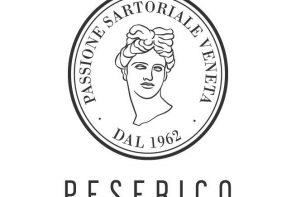At WAG, we’re always striving for creativity and so it is in that spirit that we present another first for the magazine — our first cover without a single subject.
Instead, we’re presenting several subjects from this, our annual arts issue. And that’s fitting, as the arts are usually a collegial affair that even when solitary — as in the case of a painter like Port Chester’s Jon deMartin (Jeremy’s story) — are a conversation among the artist, the subject and the idealized audience.
As it is, the arts issue is always among our easiest to fill and our most beautiful. That’s because we live among so many imaginative people, who have met this challenging moment with the grace of their gifts. That’s apparent from our opening essay, inspired by the extraordinary riff on Maurice Ravel’s “Boléro” that Juilliard created at the height of the pandemic in New York this past spring. It offers an example of one of the things the arts do best — give meaning to suffering. In times of sorrow or in joy, artists go deep within to reach out.
Among those you’ll meet again or for the first time in these pages are the photographic couple John Bigelow Taylor and Dianne Dubler, to whom we introduced you last month in our story on the otherworldly jeweler Frederic Zaavy. The Highland Falls residents take the stage in this issue as we explore not only the celebrated books they’ve photographed, packaged and produced but the bespoke ones they’ve published under their Kubaba Books imprint. Photography is also close to the heart of Chappaqua’s Larry Lederman as he returns with a new book of “Garden Portraits: Experiences of Natural Beauty,” which focuses on 16 public and private spaces, mostly in WAG country.
Elsewhere, we dip into art history. The Bruce Museum presents “Floating Beauty: Women in the Art of Ukiyo-e,” featuring 40 woodblock prints of fleeting leisure pursuits in Japan’s seminal Edo period that capture the importance of women and the impermanence of life — key themes in this year of the pandemic and the centennial of women’s suffrage. Phil offers a poignant portrait of Hampton, Connecticut’s John Brewster Jr., who despite being deaf and mute went on to immortalize the American middle class on canvas in the early days of our republic. Gregg checks in with folk legend Arlo Guthrie, who’s spent his pandemic downtime creating a video of Stephen Foster’s apt ballad “Hard Times Come Again No More” (1854).
We also turn an eye on William Cullen Bryant, poet, journalist and editor, who championed the Hudson River School of 19th century landscape painters while leading efforts to found New York Medical College. Bryant is a reminder that arts lovers are as important in the artistic equation as are the artists themselves, because they help get the word out. People like Bryant and DJ Bruce “Cousin Brucie” Morrow, now back on AM radio in New York (Phil’s story), serve as conduits between artists and the public.
As is our wont, we interpret the word “art” liberally. We have the art of philanthropy in the extraordinary example of Shirley Cheng, a minister who, despite being blind and wheelchair-bound, founded Unite in Love earlier this year as a response to Covid-19 to feed and protect the hungry among her students in the developing world (a story by Jeremy, who also weighs in on the arts scene in the ever-popular Hamptons).
Art meets science as breast surgeon Constance M. Chen returns with a piece on post-mastectomy reconstruction in the age of the coronavirus. Similarly, cosmetic dentist Kenneth Magid weighs in on practicing his discipline in the Dickensian “best of times, worst of times.” And Jeremy, again, visits with John Diamond, a psychiatrist/artist whose Mount Kisco Life Energy Arts gallery is a place of healing and contemplation.
But isn’t that what all the arts offer? In writing about Paul Villinski’s butterfly sculptures — metaphors for his successful battle with alcoholism and drug addiction — I was reminded of the role that the butterfly has played in my own life.
When my beloved Aunt Mary, who had raised me, died on Groundhog Day in 2011, I slipped the butterfly necklace I had given her off her neck and placed it around mine. “Thank you,” I said. “I love you.”
One day in January, as I was washing my face, the butterfly pendant slipped off the chain and down the drain — never to be recovered. I knew then that 2020 — the year of yes and us in our magical thinking — would instead be the year of letting go.
At the height of the pandemic here in my favorite season — spring, Easter — I bought myself a new butterfly necklace as a gesture of defiance but also one of hope. Butterflies, a hairdresser told me when I lost my job with The Journal News 11 years ago in the Great Recession, are symbols not only of fragility but of transformation and transcendence. In purchasing a new butterfly necklace in a season of death, I was hoping for that resurrection.
And I found that this year of letting go has also turned out to be one of beginning.
A 2020 YWCA White Plains & Central Westchester Visionary Award winner and a 2018 Folio Women in Media Award Winner, Georgette Gouveia is the author of “Burying the Dead,” “Daimon: A Novel of Alexander the Great” and “Seamless Sky” (JMS Books), as well as “The Penalty for Holding,” a 2018 Lambda Literary Award finalist (JMS Books), and “Water Music” (Greenleaf Book Group). They’re part of her series of novels, “The Games Men Play,” also the name of the sports/culture blog she writes.
Her short story “The Glass Door,” about love in the time of the coronavirus, was recently published by JMS. Read WAG’s serialization of “Seamless Sky” westfaironline.com/thegamesmenplay. For more, visit thegamesmenplay.com.




